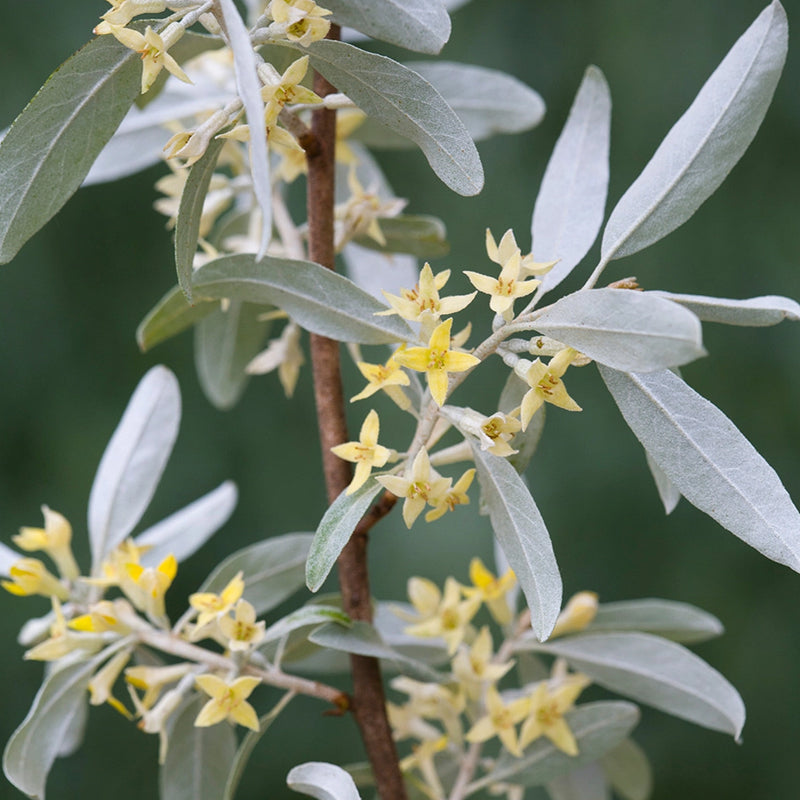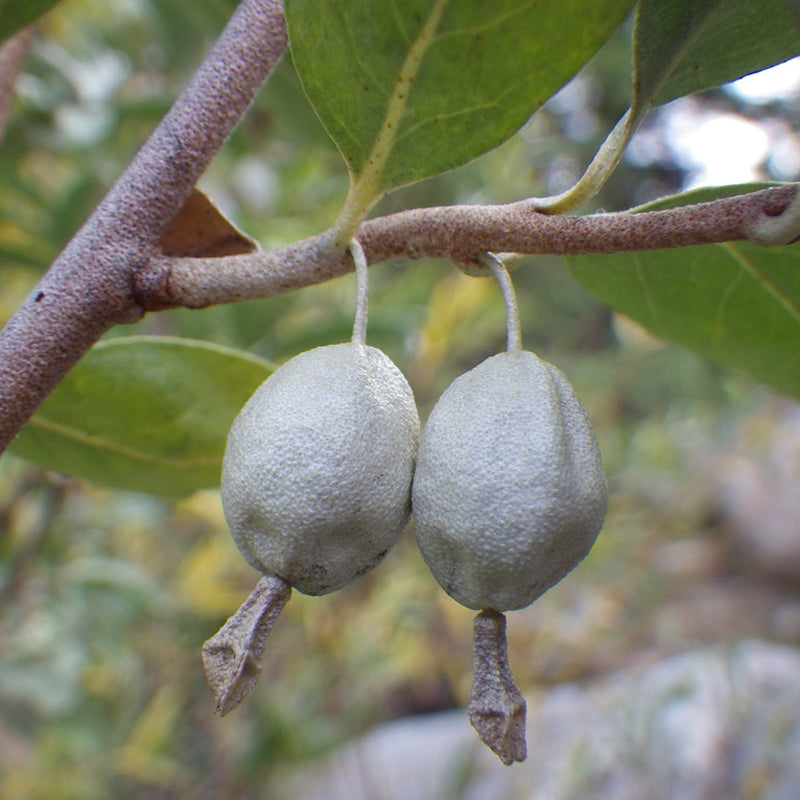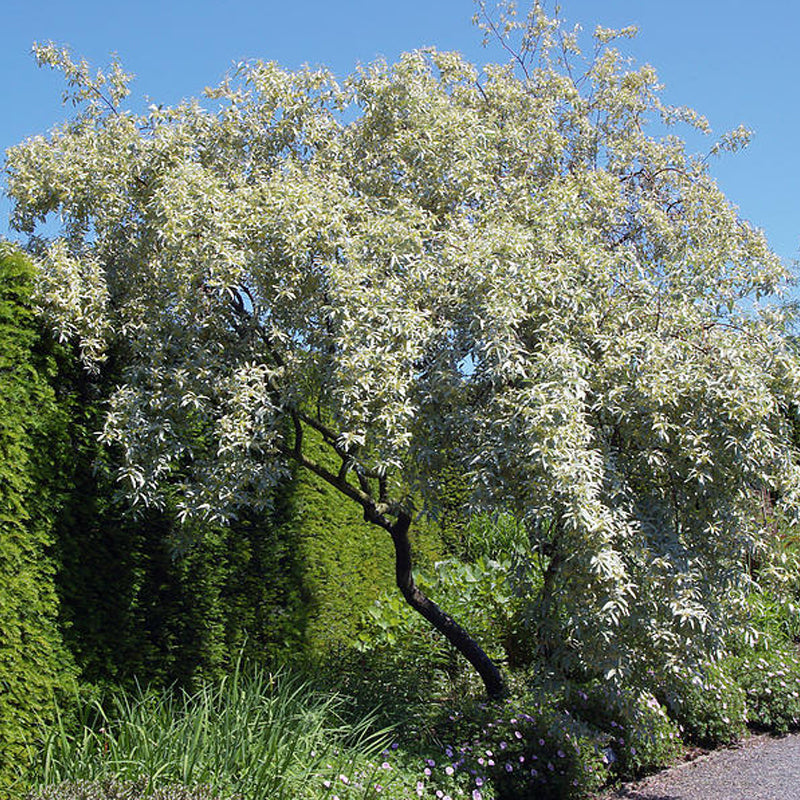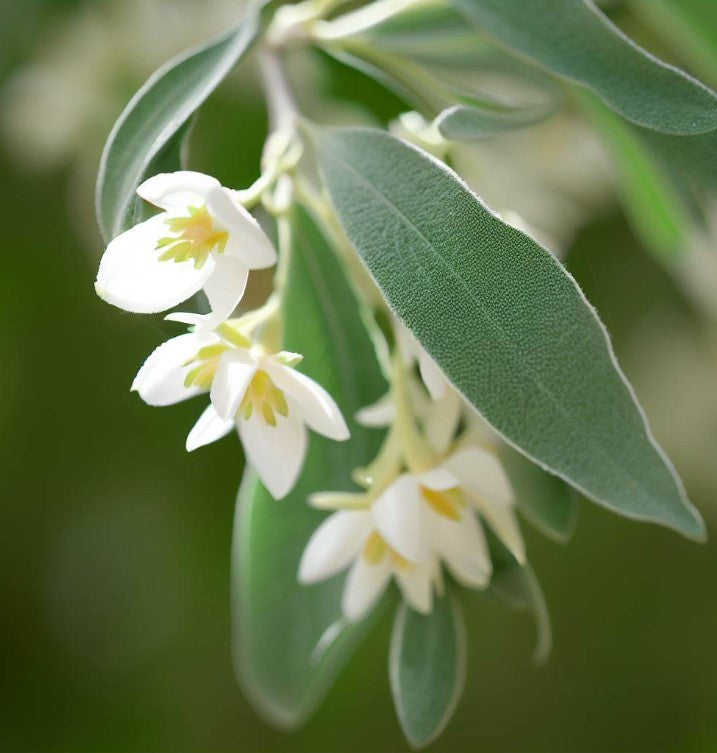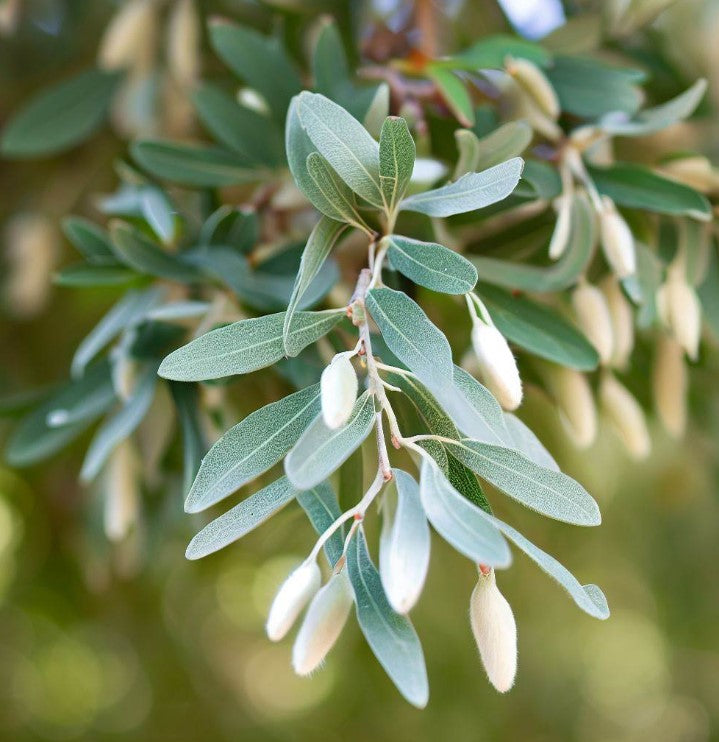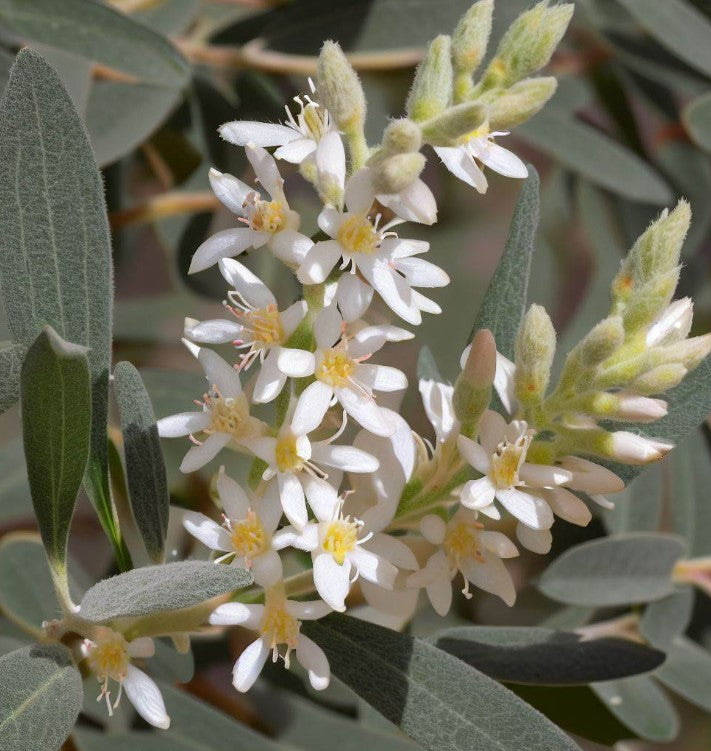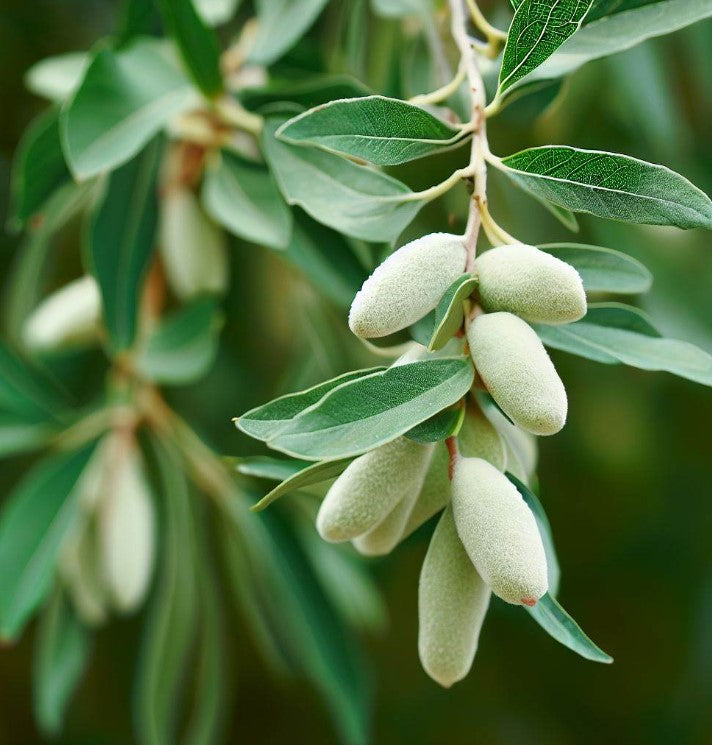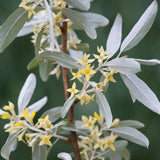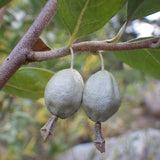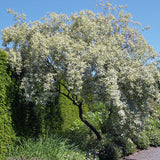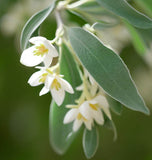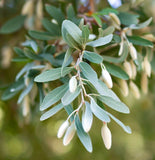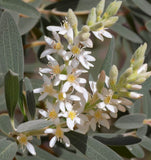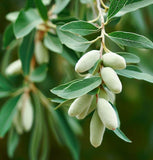Elaeagnus commutata (American Silverberry, Wolf Willow)
Elaeagnus commutata (American Silverberry, Wolf Willow) is a deciduous shrub native to North America. It belongs to the Elaeagnaceae family and is known for its silver-gray foliage, small fragrant flowers, and edible fruits. American Silverberry is appreciated for its ornamental value, its ability to withstand harsh conditions, and its ecological benefits.
Physical Characteristics: American Silverberry typically grows as a multi-stemmed shrub that reaches a height of about 1-4 meters (3-13 feet) and spreads out with a similar width. The shrub has a dense, rounded form with slender, arching branches. The leaves are simple, alternate, and elongated, with a silvery-gray color on both sides. The silver-colored scales on the leaves give the shrub its characteristic appearance.
Flowers and Fruits: In late spring to early summer, American Silverberry produces small, fragrant flowers. The flowers are pale yellow to silver-white in color and are often inconspicuous, but they emit a sweet scent that attracts pollinators, especially bees. Following successful pollination, the shrub bears small, oval-shaped fruits that ripen in late summer or early autumn. The fruits are edible and have a silver to reddish-brown color when mature. They have a tart taste and are rich in nutrients.
Ecological Importance: American Silverberry is ecologically significant as it provides food and habitat for various wildlife species. The flowers attract pollinators, while the fruits are consumed by birds and small mammals. The dense growth habit of the shrub also offers cover and nesting sites for birds and provides a habitat for beneficial insects. Additionally, its nitrogen-fixing ability contributes to soil enrichment.
Cultivation and Uses: American Silverberry is valued for its adaptability and low maintenance requirements. It is commonly used in landscaping for its ornamental attributes, particularly its silvery foliage, which provides contrast and visual interest. The shrub is well-suited for coastal areas, sandy soils, and other challenging growing conditions. The edible fruits can be eaten fresh, used in jams, jellies, or pies, or dried for later consumption.
Overall, American Silverberry is a versatile shrub that offers aesthetic appeal, wildlife benefits, and edible fruits. Its adaptability and ecological contributions make it a valuable addition to gardens, restoration projects, and landscapes where native species are desired.
Botanical Name : Elaeagnus commutata
Common Name : American Silverberry
Height : 12 ft
Spread : 3 ft
Germination Info : Seed requires 60-90 days cold moist stratification.
Hardiness zone : 3-8
Average seed per ounce : Approx. 206

